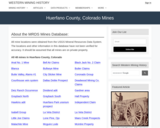How can you collaborate with partner/s to design a garden that grows ingredients for a pizza? Your design will be specific to the conditions of the Maine community where you live, and you will have several important decisions to make about its location. Will the garden be indoors, outdoors, virtual, or a combination?
Your partner/s can be friends, family, classmates, community members, or you can choose to work alone. Using a Google Slides Template that you copy and download, you will document your pizza garden designs. Your final garden design will be shared using a slideshow, video, or photograph format, with an audience that you choose -- You Tube, your local School Board, Google Classroom and a favorite teacher, Google Sites, social media, family and friends, or create your own hashtag.
Research will help you decide what the best growing situations are for your Pizza Garden plants and your environment. You will explore various designs and then, based on your new learning, you will design a garden that represents your thinking behind the choices you made. Finally, you will use the method that works best for you and share your Pizza Garden design with others.
Again, all of this work can be done collaboratively, with partners, or by you independently.
So, what is the best design for a pizza garden in Maine? It's up to YOU!


